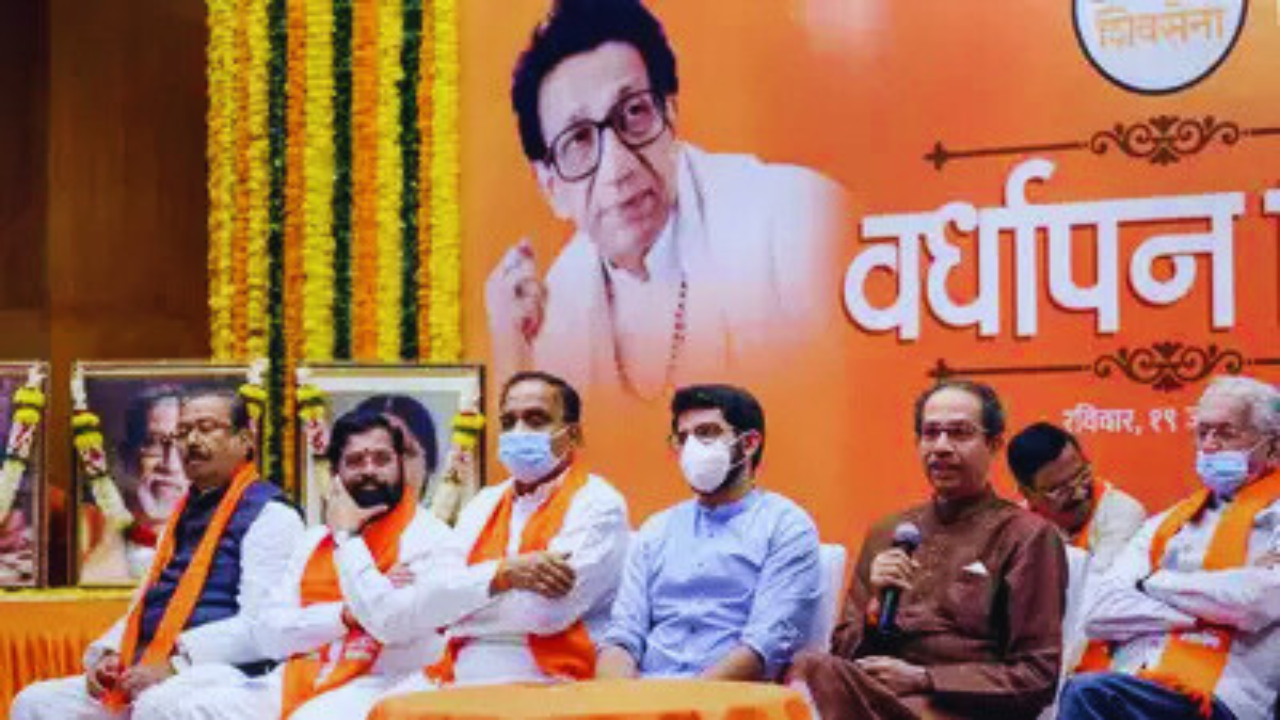Maharashtra is one of India’s most politically significant states, often shaping the nation’s political landscape. With its diverse population and vibrant culture, the state’s politics reflect a blend of traditional ideologies and modern governance. I will provide delve into the latest news and updates from Maharashtra’s political scene, focusing on key developments, party dynamics, and public policies.Maharashtra, often hailed as the financial capital of India, plays a pivotal role in shaping the country’s political discourse. The state is home to a vibrant democracy, with multiple parties and leaders contributing to its dynamic political framework. The interplay between traditional ideologies and progressive governance makes Maharashtra a hotspot for political strategies and decisions that often have national implications.
Recent developments in Maharashtra politics have been marked by significant shifts in alliances, policy reforms, and leadership changes, making it a topic of interest for political enthusiasts and analysts alike. From the functioning of regional powerhouses like the Shiv Sena, NCP, and BJP to the rise of independent voices and smaller parties, the state’s political landscape is constantly evolving. The high-stakes decisions and debates here not only impact the local populace but also set precedents for the rest of the nation.
Read More: Maharashtra politics have been marked by significant shifts
Current Political Scenario in Maharashtra
Maharashtra’s political landscape is marked by fierce competition among influential parties vying for power and dominance. Coalition governments are a recurring feature, reflecting the state’s diverse electorate and fragmented voter base. The primary political players include the Shiv Sena (Uddhav Balasaheb Thackeray faction), Nationalist Congress Party (NCP), Bharatiya Janata Party (BJP), and Congress, alongside emerging regional parties and independent leaders. Recent developments have seen shifts in alliances, with splits within major parties and reconfigurations of political equations.
The BJP’s increasing foothold in Maharashtra has been countered by strong opposition from the Maha Vikas Aghadi (MVA) alliance. Governance debates often center on issues like agrarian distress, infrastructure development, and urbanization challenges. Furthermore, leadership tussles within parties have intensified, making the political scenario dynamic and unpredictable. These factors together underscore the complexity of Maharashtra’s politics, where every decision has significant implications for the state and the nation.
| Political Party | Leader | Ideology | Current Status |
| Shiv Sena (Shinde Faction) | Eknath Shinde | Regionalism, Hindutva | Leading Coalition |
| Nationalist Congress Party (NCP) | Sharad Pawar | Secularism, Social Justice | Opposition |
| Indian National Congress | Nana Patole | Secularism, Progressive | Opposition |
| Bharatiya Janata Party (BJP) | Devendra Fadnavis | Nationalism, Hindutva | Coalition Partner |
Recent Developments in Maharashtra Politics
Maharashtra’s political stage has witnessed dramatic shifts in recent years, marked by party splits, realignments, and leadership transitions. The most notable development was the split within the Shiv Sena, where Eknath Shinde broke away to form his faction, leading to the collapse of the Maha Vikas Aghadi (MVA) coalition government. This political upheaval paved the way for a new alliance between Shinde’s faction and the BJP, with Eknath Shinde assuming the role of Chief Minister and the BJP’s Devendra Fadnavis serving as the Deputy Chief Minister. This change has sparked debates over the future of regional parties and the growing influence of national parties like the BJP in state politics.
Coalition Government Dynamics
The current coalition government in Maharashtra, led by Chief Minister Eknath Shinde, is a result of an alliance between the Shiv Sena’s Shinde faction and the Bharatiya Janata Party (BJP). This coalition formed after a significant split within the Shiv Sena, leading to a shift in the state’s political dynamics. The alliance, while focusing on governance and infrastructure development, has faced significant challenges, including internal power struggles and opposition criticism. The Maha Vikas Aghadi (MVA), which includes the Uddhav Thackeray-led Shiv Sena faction, Nationalist Congress Party (NCP), and Congress, has been a vocal critic of the government’s policies and decisions. Despite these challenges, the current coalition is working to maintain political stability and implement reforms aimed at the state’s growth.
Policy Focus Areas
The Shinde-Fadnavis government has prioritized infrastructure development, economic revival, and addressing agrarian challenges. Landmark projects such as the Mumbai Coastal Road, the Samruddhi Expressway, and initiatives in renewable energy signify the government’s vision for long-term growth. Efforts to tackle farmer distress include measures for crop insurance, financial assistance, and water conservation. Additionally, the administration has highlighted investments in urban modernization and green energy projects, aiming to position Maharashtra as a leader in sustainable development and economic progress. Despite these initiatives, critics argue that more attention is needed on pressing issues like unemployment and rising inflation.
| Event | Date | Impact |
| Split in Shiv Sena | June 2022 | Reshaped the state’s political dynamics |
| Farmer Protest Movements | Ongoing | Highlighted agrarian challenges |
| State Budget Announcement | February 2024 | Focused on infrastructure and social welfare |
Challenges Facing Maharashtra’s Government
Maharashtra’s government faces challenges such as economic recovery post-pandemic, addressing unemployment, and sustaining industrial growth. Agricultural issues like crop failures, inadequate irrigation, and delayed subsidies continue to strain rural areas. Additionally, political instability due to shifting alliances and internal party conflicts poses governance challenges. These factors require strategic solutions to ensure long-term stability and growth.
Economic Concerns
Maharashtra, known as India’s economic powerhouse, is facing significant challenges in maintaining its growth momentum after the COVID-19 pandemic. The lockdowns and restrictions heavily impacted key sectors such as tourism, manufacturing, and retail, leading to widespread job losses and revenue declines. As the state recovers, reviving small and medium enterprises (SMEs) has become a priority, along with addressing urban unemployment and controlling inflation. The state’s ambitious infrastructure projects, while crucial for long-term growth, need to be balanced with fiscal sustainability amid global economic uncertainties like fluctuating commodity prices and disrupted supply chains. These factors demand strategic economic policies to restore Maharashtra’s robust economic standing.
Agricultural Issues
Agriculture remains a critical sector for rural Maharashtra, yet it faces numerous hurdles. Irregular rainfall patterns, frequent crop failures, and the lack of adequate irrigation infrastructure continue to strain farmers’ livelihoods. Furthermore, delayed subsidies, insufficient crop insurance coverage, and fluctuating market prices exacerbate their struggles. These issues have led to recurring farmer protests, pushing the government to implement more sustainable solutions. These include providing better access to credit, improving irrigation systems, and establishing fair pricing mechanisms for agricultural produce. Addressing these concerns is vital to ensuring the economic stability of rural communities and supporting Maharashtra’s agrarian economy.
Emerging Trends in Maharashtra Politics
Emerging trends in Maharashtra politics show a growing focus on youth and women’s participation, with parties actively promoting young leaders and policies that empower women. Digital campaigning is also gaining momentum, with political parties leveraging social media platforms to engage voters more effectively. Additionally, regional issues, such as farmers’ welfare and urban infrastructure, are becoming key talking points. These trends reflect a shift towards more inclusive and technology-driven political engagement in the state.
Youth and Women Participation
Maharashtra’s political landscape is undergoing a transformation with a strong emphasis on youth and women’s participation. Political parties are increasingly focusing on young leaders, encouraging their involvement to connect with first-time voters and bring fresh perspectives to governance. This is a strategic move to energize younger generations and ensure their active role in shaping the future. Simultaneously, women’s participation in politics is being supported through policies like reserved seats in local bodies and various welfare schemes aimed at enhancing their socio-economic status. This shift signifies the importance of creating inclusive political spaces where these demographic groups are empowered to contribute significantly to the state’s development.
Digital Campaigning
Digital campaigning has revolutionized Maharashtra’s political processes, transforming how parties engage with voters. Social media platforms like Facebook, Twitter, and Instagram are now integral to political campaigns, enabling parties to conduct online rallies, live Q&A sessions, and personalized advertisements to reach a wider audience. Targeted messaging through WhatsApp groups and collaborations with micro-influencers are increasingly being used to engage specific voter segments effectively. This approach has proven to be highly efficient in connecting with both urban and rural populations, allowing for a more dynamic and interactive electoral process. The shift toward digital campaigning is redefining how political messages are delivered and received in the state.
Wrapping Up
Maharashtra’s political scene remains vibrant, filled with constant shifts and transformations, which contribute to its complex and unpredictable narrative. Every new development—whether in coalition dynamics, policy changes, or leadership changes—adds depth to the state’s political landscape. This evolution highlights the balancing act between holding onto tradition and embracing modern governance solutions. As political alignments shift and new parties emerge, citizens and policymakers alike must stay informed and adaptable to navigate this dynamic environment.
The state’s politics not only affect local governance but also have a ripple effect on national policy and socio-economic trends. In a state as economically significant as Maharashtra, decisions made at the political level often define the direction of development in other regions as well. With frequent changes in alliances, policy debates, and ongoing leadership battles, the state’s political future continues to captivate and challenge observers. As we monitor developments, it becomes clear that Maharashtra’s political landscape will continue to serve as a barometer for India’s evolving democratic processes and governance strategies in the years ahead.
FAQs
What is the current coalition in power in Maharashtra?
The current coalition government in Maharashtra is led by the Shiv Sena (Shinde faction) and the Bharatiya Janata Party (BJP), with Eknath Shinde serving as the Chief Minister. This alliance emerged after a split in the Shiv Sena, marking a significant shift in the state’s political dynamics. The partnership aims to address the state’s pressing issues, focusing on governance and infrastructure development. Despite facing opposition from the Maha Vikas Aghadi, the coalition has managed to secure its position in state politics.
What are the major political parties in Maharashtra?
The major political parties in Maharashtra include the Shiv Sena, Bharatiya Janata Party (BJP), Nationalist Congress Party (NCP), and the Indian National Congress. These parties dominate the political discourse and have a significant influence on policy decisions. The Shiv Sena has historically been a major regional player, while the BJP has expanded its presence in the state. NCP and Congress also hold substantial ground, particularly in rural areas, making Maharashtra’s political landscape highly competitive.
What are the key focus areas of the Maharashtra government?
The Maharashtra government is focused on several key areas, including infrastructure development, agrarian reforms, economic revival, and investments in green energy projects. Major infrastructure projects like the Mumbai Coastal Road and the Samruddhi Expressway are at the forefront of this agenda. Additionally, the government aims to boost agriculture through improved irrigation systems, provide financial support to farmers, and focus on sustainability through renewable energy initiatives. These goals reflect a balanced approach to growth and sustainability.
How has the Shiv Sena split impacted Maharashtra politics?
The split within the Shiv Sena has had a profound impact on Maharashtra’s political landscape. Eknath Shinde’s faction broke away, forming an alliance with the BJP, which led to the collapse of the Maha Vikas Aghadi government. This shift has not only redefined alliances but also created a power struggle within the state. The divide has sparked legal and political battles over control of party assets, leadership, and future strategies. This has significantly altered the state’s governance, leading to unpredictable political dynamics.
What are the main challenges facing Maharashtra’s farmers?
Maharashtra’s farmers face a range of challenges, including crop failure due to erratic rainfall, inadequate irrigation infrastructure, and delayed government subsidies. These issues have resulted in increased financial stress and rural protests. The lack of sufficient support systems, including crop insurance and fair pricing mechanisms, further exacerbates their struggles. Addressing these challenges is critical for the government to ensure the welfare of farmers and the long-term sustainability of agriculture in the state.
How is the Maharashtra government addressing unemployment?
Unemployment remains a significant concern for Maharashtra’s government, especially in the wake of the COVID-19 pandemic. The state is focusing on promoting industrial growth, boosting the startup ecosystem, and investing in infrastructure projects to generate jobs. Additionally, the government is working on skill development programs to equip the youth with the necessary skills for modern industries. Tackling unemployment is essential to maintain economic stability and ensure equitable growth across urban and rural areas.
How are political parties in Maharashtra engaging with youth voters?
Political parties in Maharashtra are increasingly focusing on engaging youth voters by promoting young leaders and addressing issues that resonate with them. Initiatives like job creation, education reforms, and digital connectivity are central to their campaigns. Parties are leveraging social media platforms to connect with the youth, organizing rallies, and holding interactive sessions to increase political awareness. By prioritizing youth concerns, these parties hope to secure a strong voter base for the upcoming elections.










